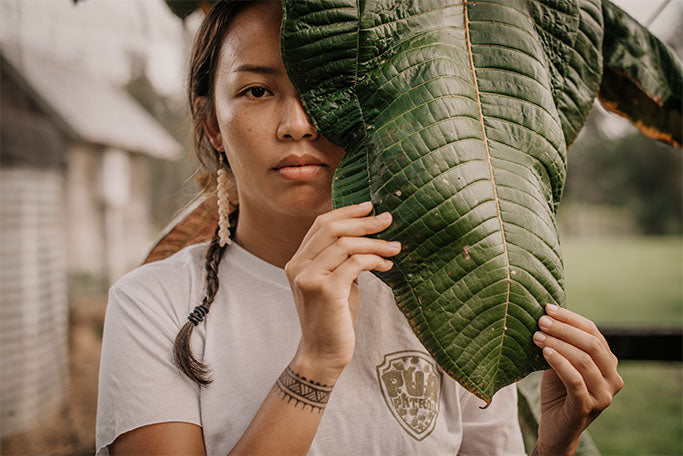THE PURPLE PLAGUE : Miconia calvescens in Wailua
April 19, 2023 – Haylin Chock

Welina Mai!
Miconia (Miconia calvescens) is considered highly invasive and is on the Hawaii State Noxious Weed List. This was one of the first target species KISC aimed to contain 20 years ago and so far has been successful in preventing its spread to other parts of the island. Miconia is only found in the Wailua area.The population of Miconia is located off the Kuilau trail in Wailua State Park and Wailua Homesteads on the east side of Kauaʻi. KISC recommends brushing off any mud and dirt after entering these areas as Miconiaʻs seeds are extremely small and can easily hitch a ride on your equipment. Invasive species are more commonly associated with vertebrates such as mongoose, coqui frogs, and the occasional snake; however, some of the most harmful invasive species are plants. Miconia, if left unchecked, can quickly spread across broad areas of land and have an "umbrella effect." This means it can shade out the native understory and impact our watershed's ability to recharge our aquifer.

Miconia was Introduced to Tahiti in 1937, and since then, it has overwhelmed two-thirds of Tahiti's forests. Miconia is directly responsible for threatening 25% of their native forest species with extinction. Miconia grows into a large tree and reaches up to 50 feet tall. If you are hiking, you can identify it by its large two-foot oval-shaped leaves, dark green on top, purple underneath, with three main midribs running from stem to leaf tip, as seen below.

The community might be wondering why it hasn't been entirely eradicated over the last 20 years of containment. This is because Miconia is incredibly resilient. A single plant can grow from seed to mature seeding tree within four years. A mature tree can produce about 3 million seeds several times per year. These sand-grained seeds can remain viable for 19 or more years. Birds and other animals can quickly spread seeds after eating the fruit or tracking through the seed contaminated mud. Unlike other islands, Miconia is difficult to detect in helicopter surveys on Kauaʻi because the population is under a thick canopy of Albizia, another invasive tree. To catch the plants before they are fully mature, our dedicated team must go out every week, sometimes several days in a row, and hike through steep terrain and survey areas for Miconia.

If you are hiking near the Kuilau Trail, always remember to brush off your shoes and clothes to prevent the spread of seeds.

If you spot a Miconia in this or other areas of the islands, take a photo and send it to kisc@hawaii.edu. Because of our vigilant community, we can keep these highly invasive species at bay.


0 comments